Hope you've been enjoying my "Why Royal Weddings Matter" series on Confluence Daily! Latest installment reprinted below with yummy images!
What the Veil Reveals
Bridal veils made
a comeback with Princess Diana in the summer of 1981 like they did in the
nineteenth century with Prince Charles’ great-great-great grandmother. Although
Queen Victoria’s short lace veil—a lyrical masterpiece of handmade Honiton
lace—was “decorative only,” pinned to her chignon and falling softly over her shoulders,
Diana’s was long, lush and sparkly and, breaking with royal tradition, covered
her face for a much fussed-over “virginal” arrival into St. Paul’s cathedral on
her father’s arm. Many feminists called it a “shroud.” And for some modern young women just beginning
to revel in their independence and sexual freedom during this time, wearing a
bridal veil did, indeed, seem a bit out-of-date, if not out-of-touch.
Not insensitive
to world politics in the 1980s and ‘90s—the years I had my bridal art-to-wear
shop in Atlanta—my focus, however, was helping a bride feel just as beautiful inside as she looked outside. I loved
the look of the sheer illusion veil like Diana wore, it seemed to connect a
woman with something deeply feminine and quietly mysterious. Worn over the face,
enveloping the bride in a quiet reverie, the veil helped block out a busy,
distracting world, moving her attention inward. Fashion designer Vera Wang
considers “nothing quite as transformational as a bridal veil. The blend of
sensuality and ritual is positively seductive.”
The bridal veil
in the European-American tradition went in and out of fashion during the last
two-hundred years or so. But Queen Victoria followed “royal rules” more than
fashion for her wedding in 1840. “Since the earliest centuries,” explained author
Maria McBride-Mellinger, “royal brides, who very often had never met their
affianced, could not conceal their faces, preventing a last-minute
substitution.” (And this practice for Windsor brides continued until Diana.) British
historian Ann Monsarrat described the trend for the rest of us: “Wearing a veil
over the face did not evolve until the 1860s and ‘70s; and the custom of
arriving at the church, veil demurely down, and leaving triumphantly
bare-faced, was an even later refinement.”
Most ancient
civilizations have something in their heritage around maidens and bridal veils.
“The most important element of a Roman bride’s dress was her veil,” reported
McBride-Mellinger. “In fact, nubere,
the term for veiling, was synonymous with marriage, and the day after
consummation was known as the unveiling.” Modern brides, nevertheless, may choose
to wear a bridal veil simply because it’s fetching and pretty, whether a
“maiden” or not!
Of course, the
new millennium brought the first of modern royal brides in 2011 when the lovely
Kate Middleton wed Prince William. “When she came in with that veil over her
face, it was almost ethereal, like she was coming through a cloud—an angel
coming into the Abbey,” said one dazzled wedding guest. The sheer layer of
ivory silk tulle, finger-tip length and edged with hand-embroidered flowers created
by the Royal School of Needlework, was rather magical as it caught the wind and
became the perfect accessory to complete Kate’s exquisitely crafted silk and
lace gown.
Like Kate, Meghan
Markle, the bride of Prince Harry, chose the romantic style of entering the
wedding chapel wearing a sheer veil over her face, attached to a royal diamond
tiara. Yet, as Kate’s father had done for her, it was Meghan’s groom who performed
the intimate “unveiling” at the altar: lifting the veil covering her face,
meeting his beloved’s steady gaze, and melting our hearts at the same time.
However, Meghan’s approach to her veil was unique. “The veil was a
big part of the story for me,” couture designer Clare Waight Keller explained
about Meghan’s bridal ensemble. She had created an unadorned, pure-white
architectural prism-of-a-gown with a sweeping train for the bride, so the veil
became the captivating showpiece, embracing royal connections:
Expertly stitched
by artisans working hundreds of hours, there was over 16 feet of gleaming white
silk tulle with distinctive botanical motifs hand-embroidered in silk and
organza fluttering in three-dimensional delight along the veil’s edge. (Flora representing
each of the 53 countries of the Commonwealth—orchids, water lilies and pansies;
a daffodil from Wales, bunchberry from Canada, and Scottish thistle—as well as California
poppies and wintersweet to honor Meghan’s old and new homes; forget-me-nots to
honor the groom’s late mother; and the mythological crops of wheat symbolizing
love and charity.) The countries, memories and sentiments represented in this trailing
“wild garden” enchantment—carried by gleeful twin pageboys as though they were
displaying the most precious and charmed work-of-art—all went on the journey up
and back down the aisle with Meghan, just as the designer had envisioned.
Both Kate and Meghan followed Diana’s lead with their veils,
bringing this spirit of beauty—femininity and stillness, sacred yet
seductive—into the hearts of modern brides worldwide. And, in turn, Meghan
brought a fresh modernity to the bridal veil beyond any “fairy princess myth”
into something so irresistibly feminine and confident about feeling beautiful
and mysterious: Cocooned in sheer silk tulle with her veil floating
behind—leaving “princess blessings” in her wake—and being revealed into the
eyes of her beloved. ~
[Parts of this article
are excerpts from The End of theFairy-Tale Bride: For Better or Worse, How Princess Diana Rescued the GreatWhite Wedding, other parts are, of course, inspired by the recent royal
wedding.]









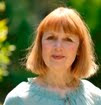
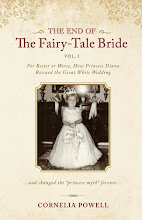
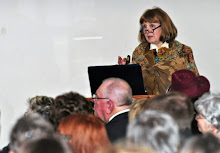
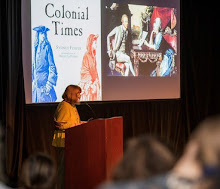



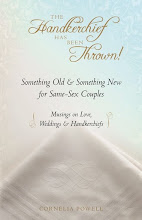

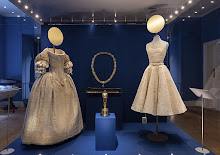
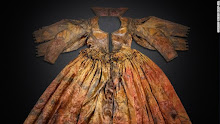
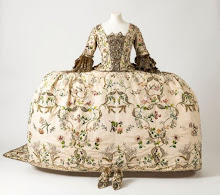






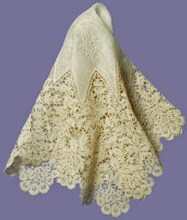
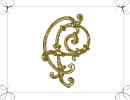
No comments:
Post a Comment